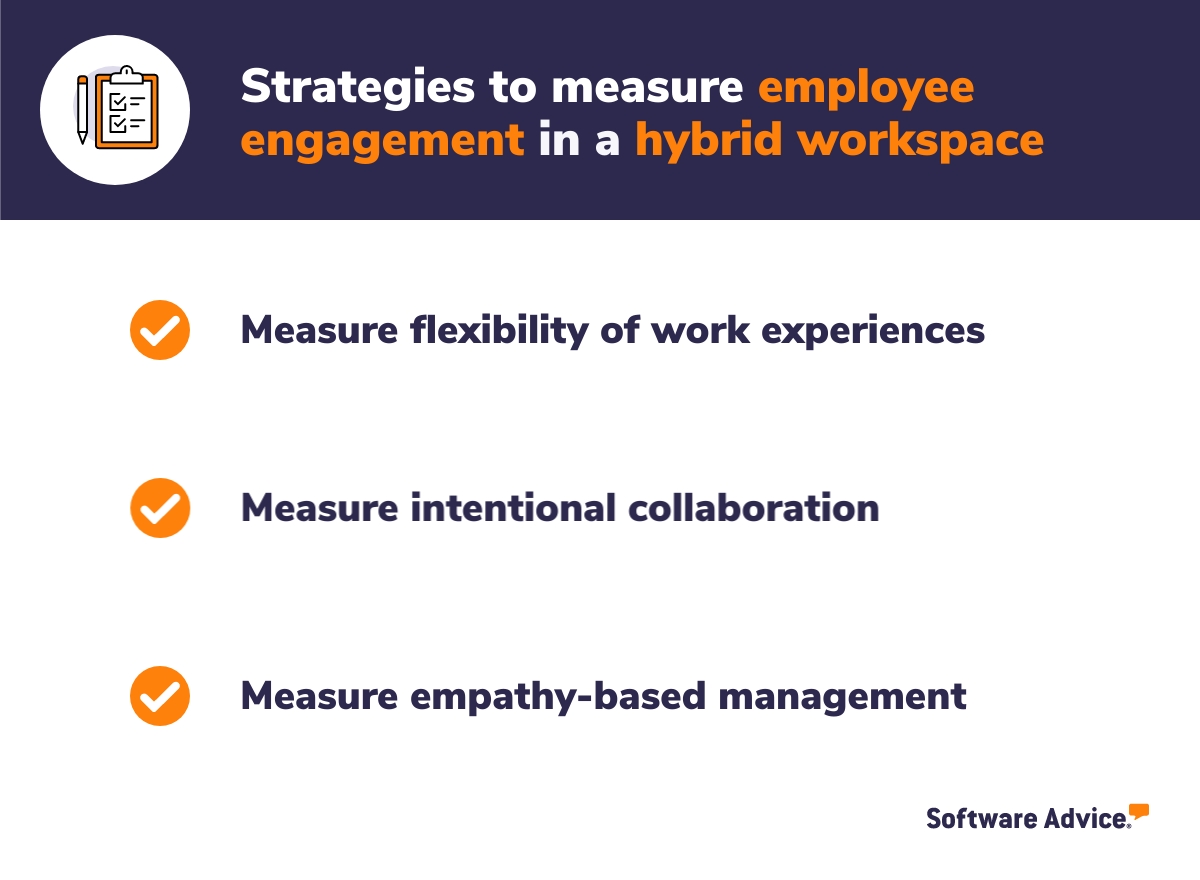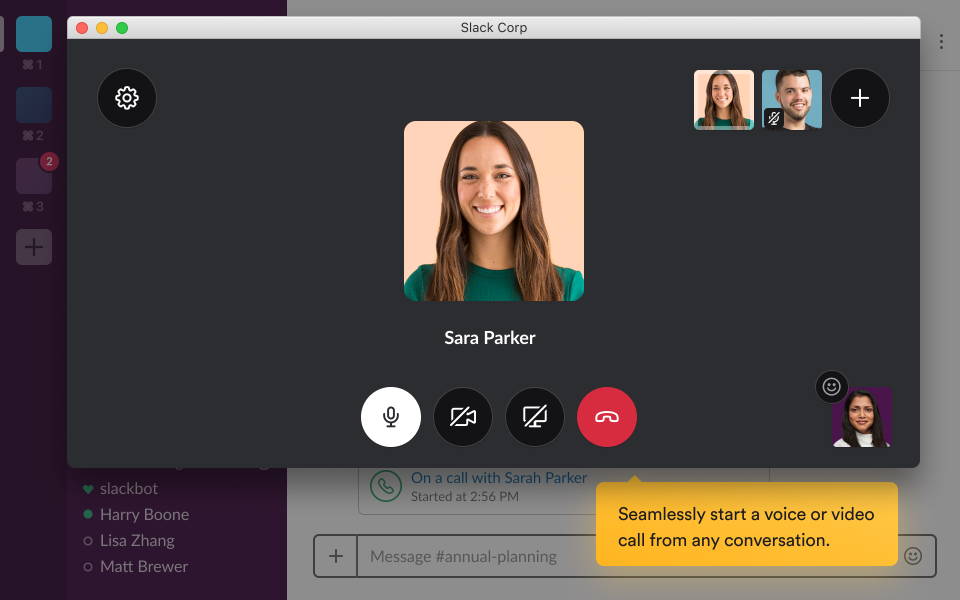How To Measure Employee Engagement in a Hybrid Workspace
For business leaders, HR, and team managers in a hybrid work environment, keeping employees engaged is near the top of the to-do list. A hybrid workspace is one of the most challenging ecosystems to navigate in terms of employee engagement due to the physical distance separating team members from each other as well as a staggered office presence on in-person days.
Hybrid employees may feel isolated from those who work in-person regularly and siloed from other hybrid workers. And once you have employee engagement measures in place, tracking how engagement fluctuates over time is another challenge.
So, what are the drivers that power employee engagement, and what should you keep in mind as you endeavor to engineer an effective hybrid work environment? These strategies can help.
Why is it important to measure employee engagement, especially in a hybrid workspace?
Employee engagement often equates to better performance and improved morale. Here’s what employee engagement looks like in a hybrid work ecosystem:
Team members embrace new challenges.
Employees feel free to express their ideas no matter where they’re physically located.
Active participation in video conferences and virtual meetings.
Consistent, high-quality performance, regardless of location.
Feedback is regularly exchanged between managers and team members in a comfortable environment.
Physical separation can result in more productive and comfortable employees, especially for those who work better outside of a traditional workplace. At the same time, a lack of engagement can lead to a feeling of alienation among hybrid or remote team members; they may feel like outsiders or even second-class employees, and it can be more difficult to notice this.
By measuring engagement, you can generate metrics that make it easier to quantify and evaluate how engaged each employee is. When you see numbers slipping, you can take action to intervene and retain employees.
How to measure employee engagement in a hybrid workspace
Here are three strategies that, when used together, provide a reliable assessment of how engaged your hybrid employees are:

Strategy 1: Measure flexibility of work experiences
Employee expectations have shifted in recent years, especially regarding the ability to personalize how they work. If an organization isn’t flexible in this area, employees may easily disengage, which has a direct impact on employee performance. According to Gartner, the percentage of engaged high-performing employees is 35% higher in a high-flexibility environment versus a low-flexibility one. [1]
When measuring the flexibility of work experiences, it’s important to keep in mind that this metric can involve more than where and when people work:
Where: Employees can choose where they work during business hours.
When: Employees can choose when they perform their work.
Who: For some companies, employees may be able to choose who they team up with when performing tasks.
What: Some flexible work environments allow team members to choose what tasks they work on.
How much: Team members can decide how intense their workload is.
Strategy 2: Measure intentional collaboration
In a traditional, in-person workspace, collaboration can occur spontaneously and serendipitously—an occurrence that isn’t as likely in a hybrid environment.
Instead, leaders should encourage and measure the number of intentional collaboration opportunities created by both team leaders and members. This kind of collaboration involves people tackling a challenge using a scheduled interaction—often in response to a specific problem or opportunity.
For instance, a team leader may encourage two people to meet to discuss how to solve a marketing challenge. This meeting doesn’t have to be face-to-face. Email, text, and video calls can work just as well.
But leaders have to be proactive about setting up these interactions while building an environment that encourages employees to seek out intentional collaboration on their own. Structured meetings are more likely to spawn productive connections in a hybrid environment, and the right collaboration tool can make this process easier on all involved.

An example of easy, structured collaboration in Slack
Strategy 3: Measure empathy-based management
Empathy is especially crucial in a hybrid environment because remote employees aren’t as visible as their in-person counterparts. [1] Consequently, there may be no way to tangibly demonstrate how hard they’re working for their team leaders or other higher-ups. This can make them feel as though they have limited options for conveying their worth.
But by using empathy-based management, team leaders can ensure hybrid employees know their efforts are recognized and appreciated. Managers should actively reach out and discuss the processes hybrid employees use to complete their work, as well as their concerns and challenges to provide any necessary assistance.
After implementing this strategy, ask employees how often their supervisors enact these touchpoints to better understand whether empathy-based management is being actively woven into your hybrid work fabric.
Focus on providing equal opportunities instead of a consistent work experience
It’s important to keep the differences between effective in-person and hybrid work environments at the forefront when facilitating (and measuring) hybrid employee engagement.
The in-office work dynamic lends itself well to consistent work experiences, such as a standard desk and meeting face-to-face in a conference room. When providing consistent work experiences, your focus is on ensuring equality when it comes to each employee’s experience. For instance, everyone on the team should have the same desks and chairs, access to printers, etc.
A hybrid workspace should focus on providing employees with equal opportunities rather than fully equal experiences. Each employee should have equal opportunities for expressing their opinions, plugging in to their team and the company culture, contributing to company wins, etc.
Ask questions such as: “Are you able to choose the kinds of projects you work on?” and "How does your experience differ from our fully in-person team?" to measure both the flexibility of hybrid employees’ work experiences and their access to opportunities.
Get started by asking questions
To effectively measure employee engagement in a hybrid environment, you need to gather data from your workforce. These resources can help you get started:
Sources
Note: The screenshots of applications included in this article are examples to show a feature in context and are not intended as endorsements or recommendations.